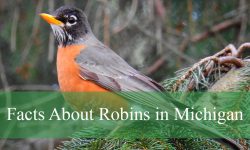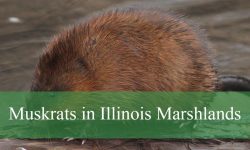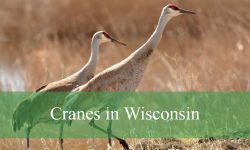Beneath Vermont’s forests, gardens, and stone walls, a small striped creature scurries with astonishing speed—its cheeks bulging with seeds, its tail twitching like a signal flag. Meet the chipmunk, one of the Green Mountain State’s most charming and misunderstood residents.
These pint-sized members of the squirrel family are often dismissed as cute backyard visitors or pesky garden thieves, but their lives are far more complex than most people imagine. From intricate underground tunnels to their surprising hibernation habits, chipmunks play a vital role in Vermont’s ecosystems while displaying intelligence and survival skills that might astonish you.
In this detailed article, we’ll uncover the truth about chipmunks in Vermont that will surprise you—their species, habits, diet, communication, and ecological importance. You’ll also learn how they adapt to the state’s changing seasons and why these tiny creatures are essential to the health of New England’s forests.
Meet Vermont’s Chipmunks

The Eastern Chipmunk
Vermont is home to one primary species—the Eastern Chipmunk (Tamias striatus). Recognizable by its reddish-brown fur, white belly, and distinctive five dark stripes running down its back, this small rodent is found across the entire state.
Adults measure about 8 to 10 inches long, including their 3–4-inch tail, and weigh between 2–5 ounces. Though they look adorable, their energy, agility, and curiosity make them some of the most industrious mammals in the forest.
Habitat and Range
Eastern Chipmunks thrive in Vermont’s diverse habitats, from deciduous forests and rocky hillsides to suburban gardens and orchards. They prefer areas with plenty of cover—fallen logs, stone walls, shrubs, and trees—where they can escape predators quickly.
They are especially abundant in the Green Mountain National Forest, Champlain Valley woodlands, and around rural homesteads. Their adaptability allows them to live almost anywhere there’s soil soft enough for burrowing and food plentiful enough for hoarding.
The Secret Life Underground
Complex Tunnel Systems
Chipmunks are expert engineers. Beneath Vermont’s soil, they dig elaborate burrow systems that can stretch up to 30 feet long and include multiple entrances, storage rooms, nesting chambers, and escape tunnels.
Each burrow has distinct sections:
- Main tunnel: Used for travel between chambers.
- Food storage rooms: Where they hoard nuts and seeds for winter.
- Nesting area: Lined with leaves and grasses for warmth.
- Bathroom chamber: A separate area to keep living quarters clean.
This sophisticated underground home provides safety from predators, insulation against cold, and an efficient pantry for survival.
Cleaning and Maintenance
Chipmunks are meticulous housekeepers. They regularly remove old nesting material, clean waste chambers, and maintain tunnel walls. Their attention to cleanliness is one reason they avoid the diseases often associated with rodents.
Behavior and Daily Life
Solitary but Busy
Unlike squirrels, chipmunks are solitary creatures, each maintaining its own territory. They spend most of the day gathering food—seeds, nuts, berries, insects—and storing it underground. During summer, they may make hundreds of trips per day between feeding and storage sites.
They are also highly vocal, producing sharp “chip-chip-chip” sounds to warn of danger or mark territory. The name “chipmunk” itself is derived from the Ojibwe word ajidamoo, meaning “one who descends trees headfirst.”
Territorial Behavior
Each chipmunk defends a home range of about half an acre, using vocalizations and chases to ward off intruders. Fights are rare but can occur when food supplies are low or burrow entrances overlap.
Chipmunk Diet: Nature’s Tiny Forager
What They Eat
Chipmunks are omnivores with a varied diet that changes through the seasons. In Vermont, their diet includes:
- Seeds and nuts (acorns, hickory, maple seeds)
- Berries and fruits (raspberries, cherries, apples)
- Mushrooms and fungi
- Insects and snails
- Occasional bird eggs or small frogs
Their cheek pouches expand to three times the size of their heads, allowing them to transport multiple seeds at once back to their burrow.
Food Hoarding Strategy
In late summer and fall, chipmunks begin stockpiling food for winter. A single chipmunk can collect over 8 pounds of seeds and nuts, filling its storage chambers with a winter’s worth of energy.
Unlike true hibernators, they periodically wake from torpor to eat from these caches before returning to sleep. This strategy allows them to survive even Vermont’s harshest winters without ever leaving their burrows.
Chipmunks and Vermont’s Ecosystems
Nature’s Gardeners
Chipmunks may look mischievous, but they perform a vital role in forest ecology. By burying seeds and forgetting some of them, they help regenerate forests. Many of Vermont’s native trees—like oaks, beeches, and maples—depend on small mammals like chipmunks for seed dispersal.
Their digging also aerates the soil, improving nutrient circulation and water absorption.
Prey for Predators
Chipmunks are a crucial food source for many of Vermont’s predators, including:
- Hawks and owls
- Foxes and coyotes
- Weasels and snakes
- Bobcats
Their populations help sustain these predators, making chipmunks an essential link in the food chain.
Reproduction and Family Life
Breeding Seasons
Chipmunks in Vermont breed twice a year—first in early spring (April–May) and again in midsummer (July–August). After a gestation period of about 31 days, the female gives birth to 3–6 babies, known as pups.
Raising the Young
Newborns are born blind, hairless, and completely dependent. They remain underground for about 5 weeks until they are weaned and ready to explore above ground.
By late summer, young chipmunks begin building their own burrows nearby, though they may remain close to their mother’s territory for several months.
Family Bonds
While chipmunks are solitary as adults, they are attentive parents. The mother teaches her young how to forage and hide from predators before sending them off to establish their own homes.
The Truth About Chipmunk “Hibernation”
Not True Hibernators
Many people assume chipmunks hibernate like bears, but that’s not entirely accurate. Chipmunks enter a state called torpor—a deep sleep that lowers their body temperature and metabolism to conserve energy.
Throughout Vermont’s cold winters, they awaken every few days to eat from their stored food before returning to sleep.
Winter Survival Secrets
Their burrows remain around 40°F (4°C) even when surface temperatures plunge below zero. Chipmunks survive on the fat reserves built during fall and their carefully stocked pantries.
When spring returns, they emerge lean but lively—ready to restart their cycle of feeding, digging, and hoarding.
Communication and Intelligence
Vocal Signals
Chipmunks use a sophisticated system of chirps, trills, and tail flicks to communicate. Each call conveys different meanings:
- Rapid chirps: Predator warning (hawks or cats nearby).
- Low clucks: Territorial signals.
- Soft squeaks: Contact calls between mother and young.
Researchers have found that chipmunks even distinguish between aerial and ground predators, altering their alarm calls accordingly.
Problem Solving
Chipmunks are surprisingly intelligent for their size. They remember food storage locations, learn to navigate mazes, and can adapt quickly to new obstacles. Observations in Vermont woodlands show that some chipmunks modify their foraging routes to avoid predator zones—evidence of spatial awareness and planning.
Surprising and Little-Known Facts About Vermont Chipmunks
- Chipmunks can make over 200 trips a day while gathering food in autumn.
- Their heart rate drops from 350 beats per minute to 5 during torpor.
- Each cheek pouch can hold 60 sunflower seeds.
- They can live up to 3 years in the wild, though many fall prey early.
- Their burrow entrances are camouflaged—chipmunks remove excavated dirt to hide them.
- They use whiskers for navigation, even in total darkness underground.
- Chipmunks can climb trees skillfully to steal birdseed or nuts.
- They share alarm calls with other chipmunks, warning nearby individuals of danger.
- Their memory lasts through winter, allowing them to relocate buried food.
- A group of chipmunks is called a “scurry.”
Chipmunks and Humans in Vermont
Common Backyard Visitors
Many Vermonters enjoy watching chipmunks dart through gardens and climb bird feeders. However, these curious creatures sometimes test patience by digging up bulbs or raiding seed trays.
While chipmunks can be mischievous, most of their activity is harmless. In fact, their presence indicates healthy soil and balanced ecosystems.
Living Peacefully With Chipmunks
If chipmunks become too bold, homeowners can use humane deterrents:
- Plant daffodils or alliums, which chipmunks dislike.
- Place gravel or mesh over bulb beds.
- Use seed catchers on bird feeders.
- Seal any gaps around porches or foundations to prevent burrow entrances.
Avoid poisons or traps—these harm non-target wildlife and disrupt natural pest control.
Conservation and Ecological Role
Stable Populations
Chipmunks are abundant across Vermont, benefiting from the state’s extensive forests and conservation-minded land management. Their population naturally fluctuates based on food availability and predator cycles but remains stable overall.
Environmental Importance
By spreading seeds and fungi, chipmunks help sustain the forest ecosystem—particularly oak and maple regeneration, vital to Vermont’s woodlands.
Protecting Their Habitat
Preserving native forests and reducing pesticide use ensures these animals continue playing their ecological roles. Supporting habitat corridors allows chipmunks and other small mammals to move safely between woodland patches.
Myths and Misconceptions About Chipmunks
Myth |
Truth |
|---|---|
Chipmunks hibernate all winter. |
False. They enter torpor but wake periodically to eat. |
They damage homes like mice. |
Rarely. They prefer outdoor burrows and avoid human structures. |
Chipmunks spread diseases. |
Very unlikely. They’re clean animals with low disease risk. |
They steal and hoard bird eggs. |
Only occasionally, not a major part of their diet. |
Chipmunks are the same as squirrels. |
They’re related but smaller, ground-dwelling cousins. |
Where to See Chipmunks in Vermont
- Green Mountain National Forest: A chipmunk paradise with rich forest floors and abundant nuts.
- Camel’s Hump State Park: Trails lined with stone walls—perfect chipmunk habitat.
- Mount Mansfield: High-altitude populations active through summer.
- Shelburne Farms: Garden and woodland edges attract plenty of chipmunk activity.
- Quechee Gorge: Scenic trails where chipmunks dart between rocks and fallen logs.
Early morning or late afternoon are the best times to spot them foraging.
FAQs About Chipmunks in Vermont
Do chipmunks hibernate in Vermont winters?
They enter torpor but wake periodically to eat stored food.
Are chipmunks harmful to gardens?
They may dig up bulbs or steal seeds, but damage is typically minimal.
What do chipmunks eat the most?
Seeds, nuts, and berries form the bulk of their diet, especially in fall.
How long do chipmunks live?
Typically 2–3 years, though some can live up to 5 in protected environments.
Are chipmunks protected in Vermont?
No specific protections exist, but they are part of the state’s natural wildlife and benefit from habitat conservation laws.
Conclusion
The chipmunks of Vermont are more than cute backyard entertainers—they are remarkable survivors, engineers, and gardeners of the forest. From building elaborate burrows to hoarding seeds that sustain entire ecosystems, these small mammals embody nature’s resilience and precision.
Understanding their habits reveals an animal perfectly attuned to Vermont’s seasonal rhythms: industrious in summer, resourceful in fall, and quietly enduring the long, snowy winters underground.
So, the next time you spot a chipmunk darting across a stone wall or hear its sharp “chip-chip” from the woods, remember—beneath that striped fur beats the heart of one of nature’s most fascinating little architects. The truth about chipmunks in Vermont is that they’re not just survivors—they’re essential players in the story of the Green Mountains.






